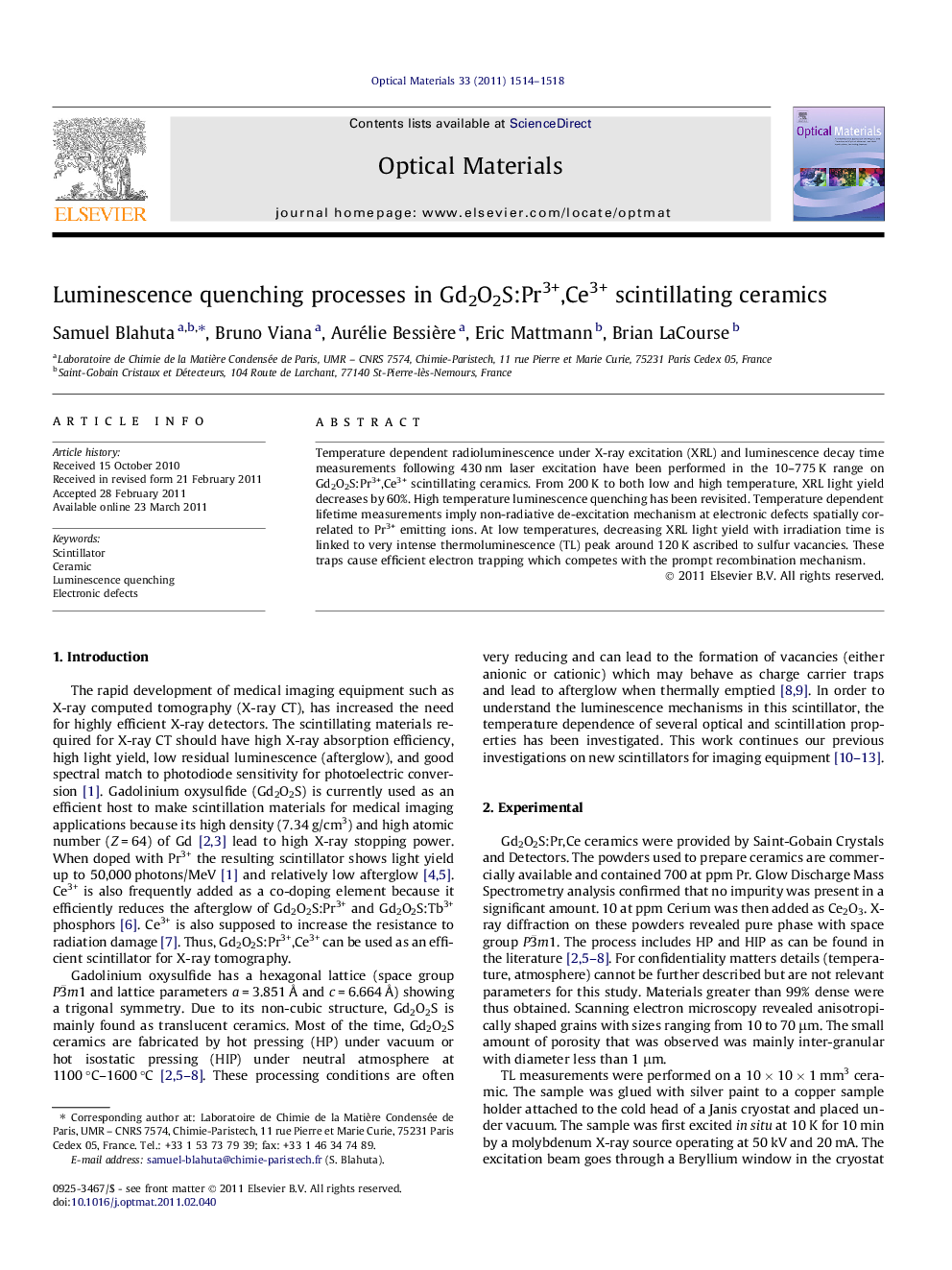| Article ID | Journal | Published Year | Pages | File Type |
|---|---|---|---|---|
| 1495399 | Optical Materials | 2011 | 5 Pages |
Temperature dependent radioluminescence under X-ray excitation (XRL) and luminescence decay time measurements following 430 nm laser excitation have been performed in the 10–775 K range on Gd2O2S:Pr3+,Ce3+ scintillating ceramics. From 200 K to both low and high temperature, XRL light yield decreases by 60%. High temperature luminescence quenching has been revisited. Temperature dependent lifetime measurements imply non-radiative de-excitation mechanism at electronic defects spatially correlated to Pr3+ emitting ions. At low temperatures, decreasing XRL light yield with irradiation time is linked to very intense thermoluminescence (TL) peak around 120 K ascribed to sulfur vacancies. These traps cause efficient electron trapping which competes with the prompt recombination mechanism.
► Pr3+ luminescence is quenched at high temperatures. ► Luminescence mechanisms are studied. ► Gd2O2S ceramics contain a large amount of electronic defects.
